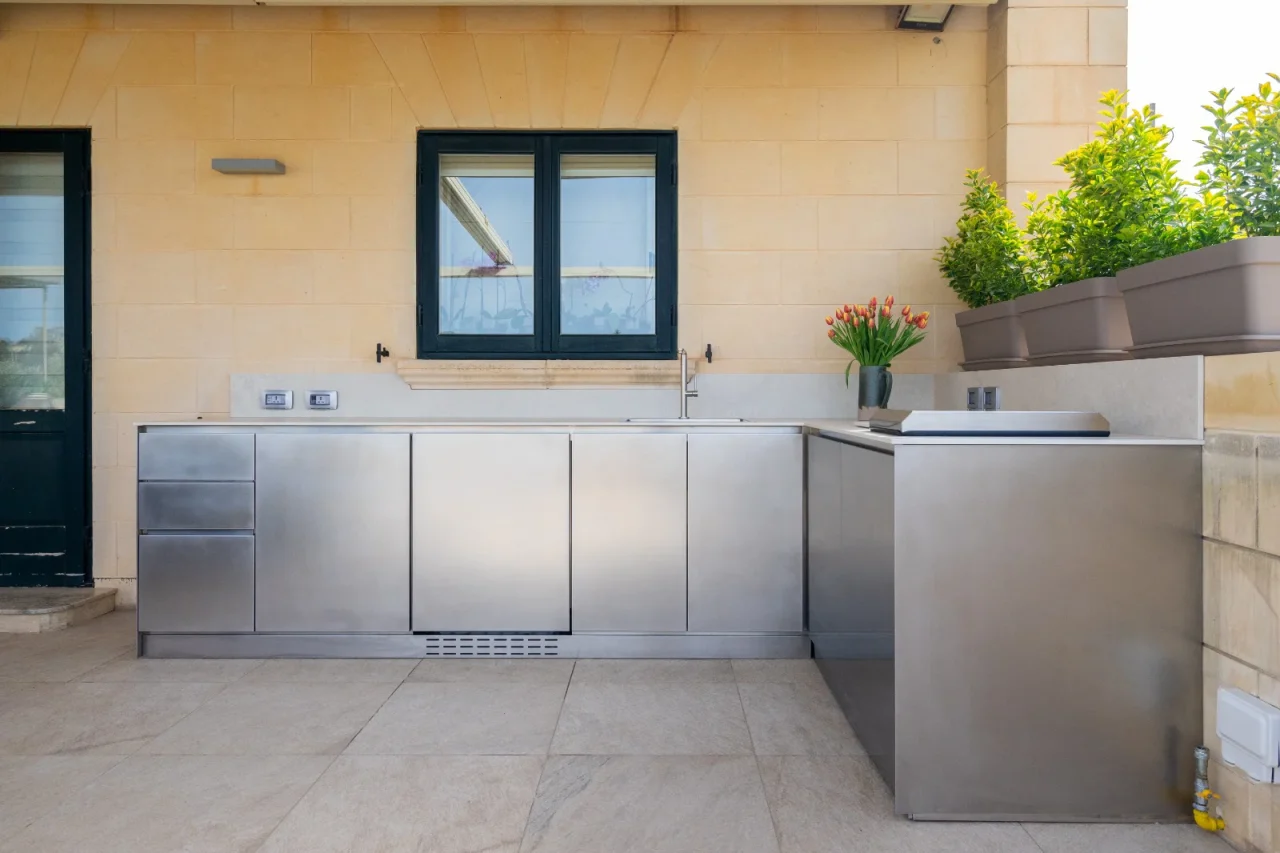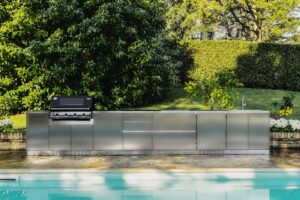Increasingly popular, outdoor kitchens offer a convivial space for cooking and enjoying time outdoors, but without proper care, they can lead to significant waste of gas, electricity, and water. That’s why it’s essential today to implement energy-saving solutions, helping not only to use resources more sustainably but also to significantly reduce maintenance costs. In this article, we’ll explore concrete strategies to make your outdoor kitchen more efficient by reducing consumption and improving overall performance.
How to Make Your Outdoor Kitchen Eco-Friendly: 6 Practical Tips
Nowadays, there are at least 6 measures you can adopt to save energy when owning and frequently using an outdoor kitchen.
Choose energy-efficient appliances.
Appliances are the main source of energy consumption in an outdoor kitchen, so it’s crucial to opt for energy-saving models, such as:
- Energy Star certified refrigerators, which ensure 9–10% greater efficiency than standard models;
- gas barbecues, which consume less than charcoal ones;
- induction cooktops, a good alternative if your outdoor kitchen has an efficient electric power source like solar panels;
- LED lights, which consume less than traditional incandescent bulbs.
Prioritize insulating materials.
The materials used in an outdoor kitchen influence energy efficiency more than you might think. In particular:
- concrete and natural stone retain heat better, reducing the need for additional energy during cooking;
- stainless steel is durable and resistant, but can overheat in the sun and should be paired with shading covers;
- a wooden roof or pergola with integrated solar panels not only provides shade but can also generate power for lights and appliances;
- wind barriers made of tempered glass or bamboo help maintain stable cooking temperatures, reducing gas or electricity consumption.
Use alternative energy sources.
The energy used in an outdoor kitchen can come from renewable sources, reducing environmental impact and cutting long-term costs:
- solar panels can power refrigerators, lighting, and even some electric barbecues or induction ovens;
- pellets produce more heat than the same amount of firewood;
- if available, natural gas is more efficient and cost-effective than LPG.
Optimize cooking methods.
The way you cook can also affect energy use, so it’s important to:
- preheat the barbecue only when needed, 5–15 minutes before cooking;
- cover food to retain heat and reduce cooking time;
- turn off gas or coals a few minutes before the end of cooking.
Avoid water waste.
To do so, consider:
- installing aerator faucets to reduce water flow while maintaining good pressure;
- choosing thermostatic mixers to keep the temperature constant;
- collecting rainwater for non-potable uses like surface cleaning or plant irrigation;
- using two containers—one with soapy water for washing and another with clean water for rinsing;
- reusing cooking water (only if salt- and fat-free) to water plants.
Automation and Smart Technology.
Smart technology can help reduce waste and optimize resource use in an outdoor kitchen with tools such as:
- smart plugs that automatically turn off appliances when not in use, avoiding standby power consumption;
- smart barbecue thermometers that monitor the exact temperature of the meat or grill, avoiding gas or charcoal waste from overcooking;
- automated lighting systems that turn on only when needed.
Saving energy in an outdoor kitchen doesn’t mean sacrificing comfort or performance—it means adopting smart solutions to optimize resources. From choosing low-consumption appliances and renewable energy sources to practical cooking strategies and water management, every small step can make a big difference.






